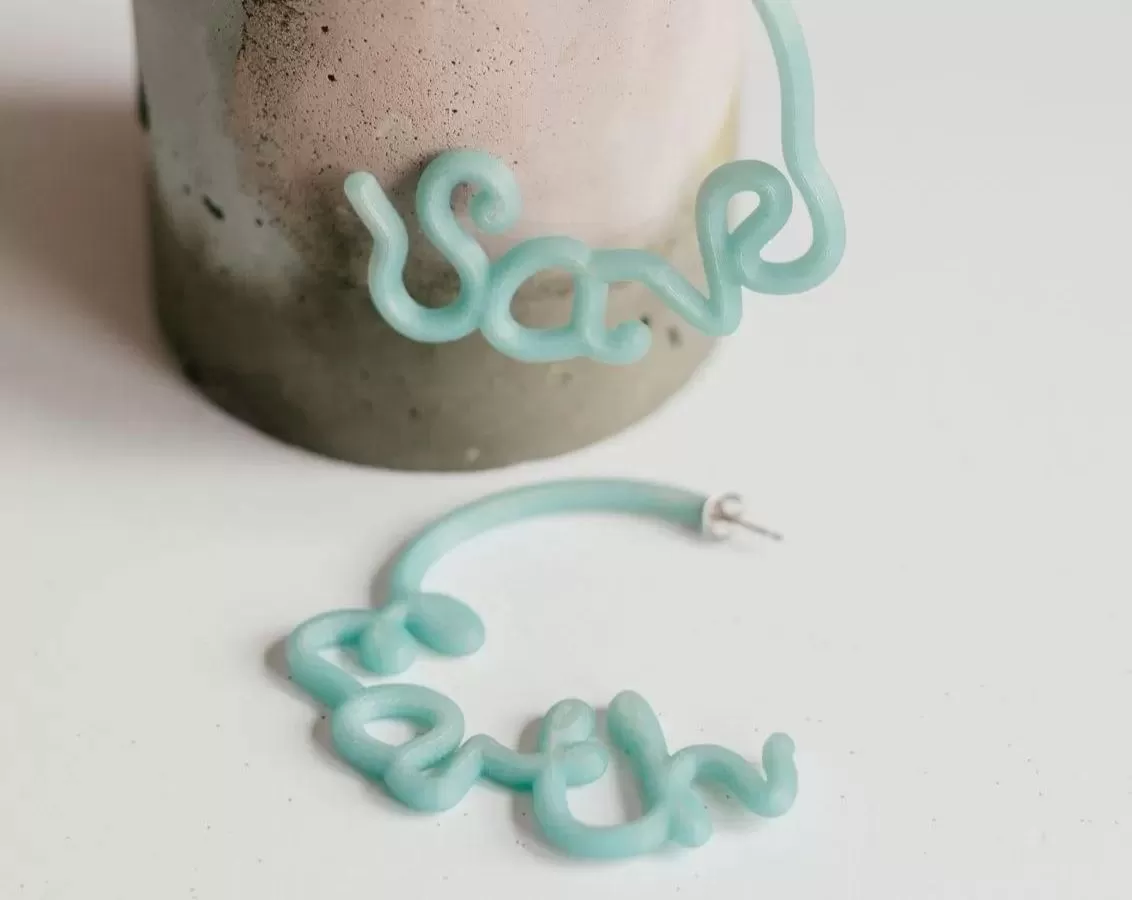Want 10% off your order? Join Club Holly & Co
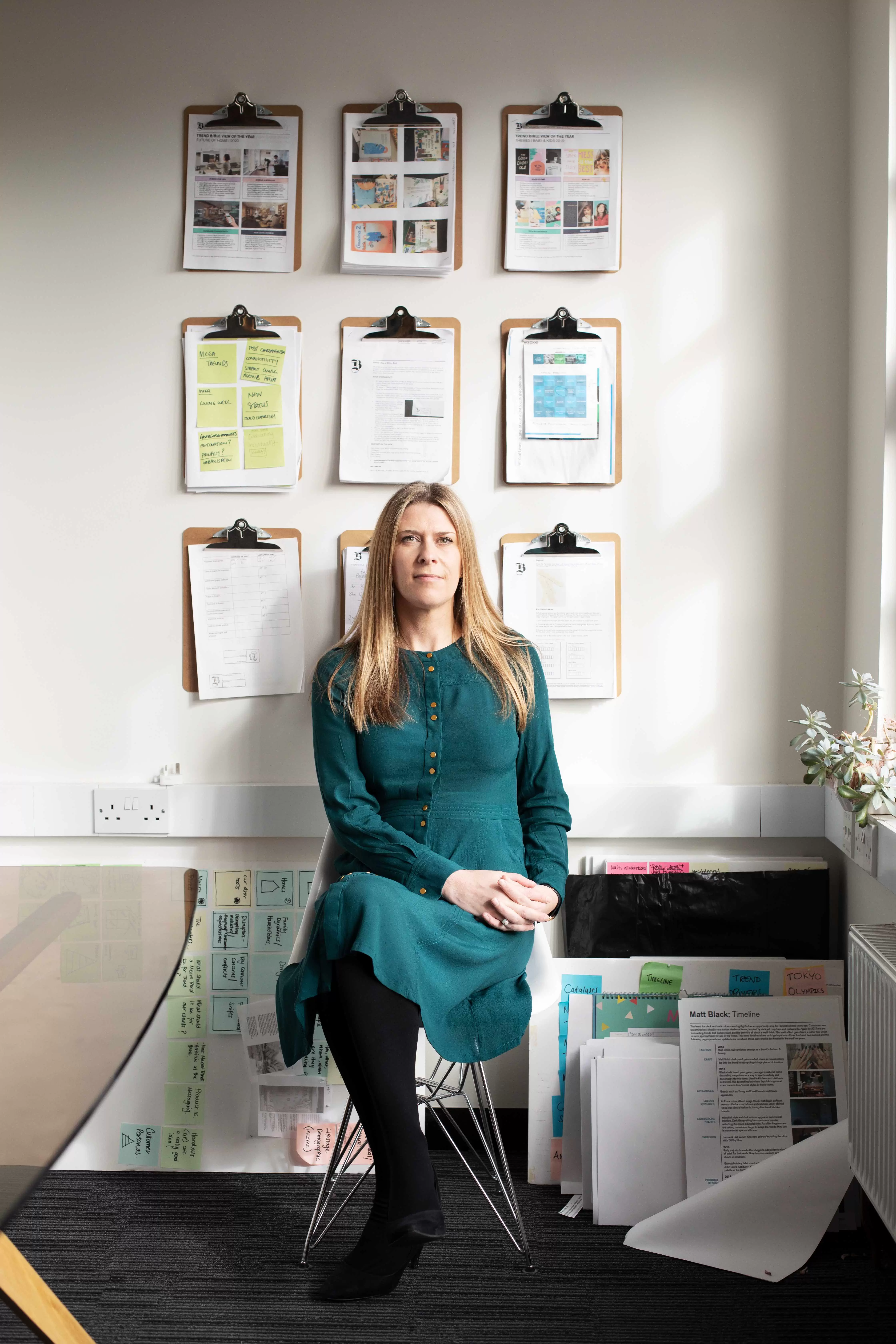
Brands of the future and anticipating future trends
Brand & Purpose
With Joanna Feeley, founder & CEO of TrendBible
29TH JANUARY 2024
How do you anticipate future trends? Especially if you’re a small business? What are the trends for 2024 and what do brands of the future look like exactly? Discover what trend expert Joanna Feeley said when she joined Holly Tucker’s Pharmacy Live…
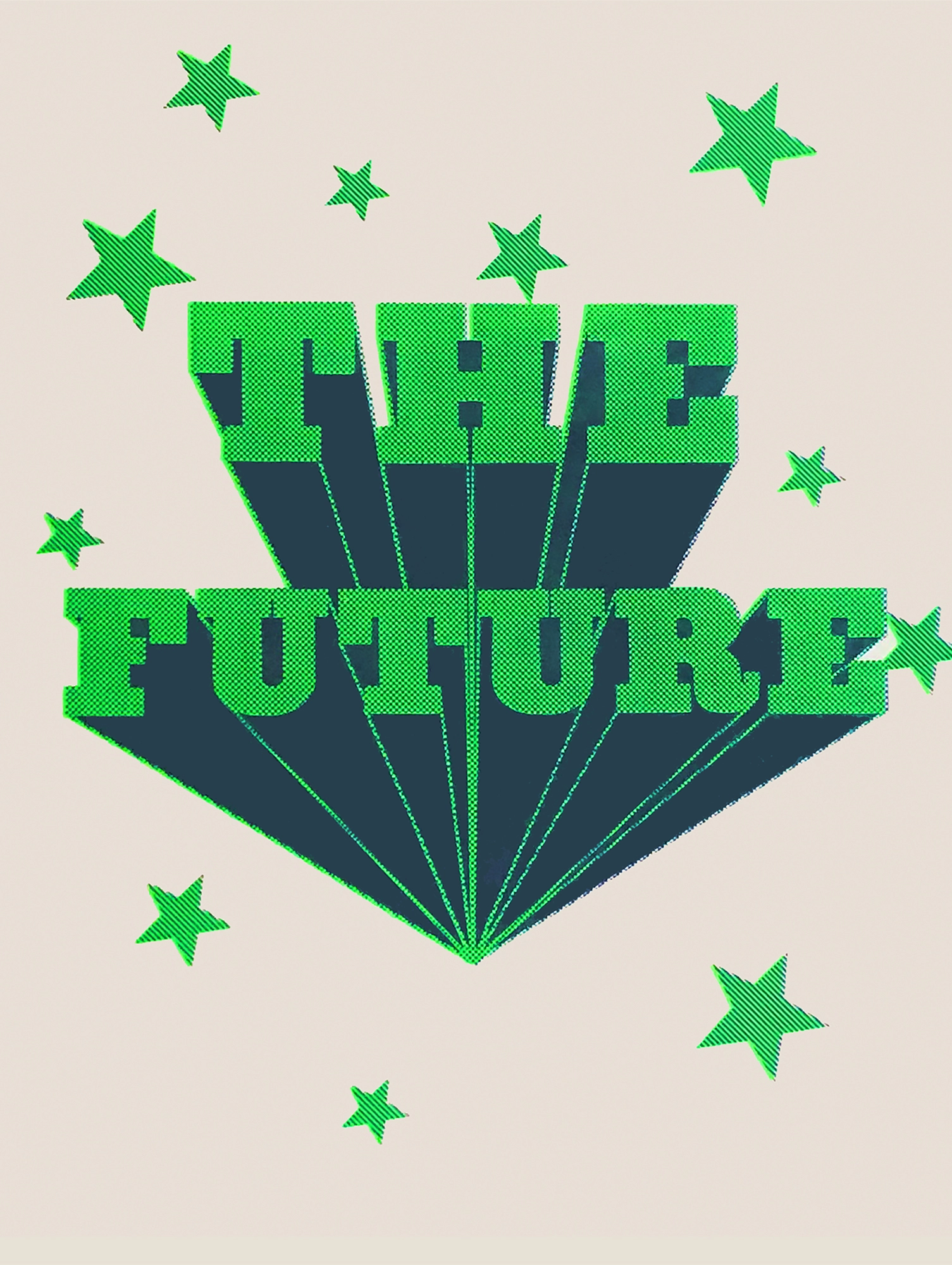
The Future Screen Print
DANDY STAR
Meet Joanna Feeley, founder & CEO of TrendBible
Joanna Feeley has worked with some of the biggest brands in the world from Mattel and Disney, to LEGO — yet as a passionate small business supporter, she’s happy to use her knowledge to help independent retailers, too. A few years ago, she set up TrendBible — a global future trends agency that helps pinpoint future opportunities and “provide the clarity, direction and support to help you face what’s ahead and step confidently into it.”
What is trend forecasting (when it’s at home)?!
Jo explains that trend forecasting is more than the output of a trend (such as marbling or Regency styling for example). Based on science, instinct and insight, trend forecasting uses signals, connections and patterns to help predict what the future might hold for people. Ultimately, it helps you communicate better with your customers by being informed about how they might be thinking or feeling and more importantly — why.
She says, “A trend can be a product, material, a finish or a colour. But we can only get to that if we understand a broader picture and set of circumstances. We need to know what a customer will be drawn towards in two years time and why, to be able to work that out. What will they start (or stop) to believe in? What will excite them or really turn them off? Our values and how we feel about the world shifts all the time. Especially with social media. That then impacts what we’ll shop for.”
Based on science, instinct and insight, trend forecasting uses signals, connections and patterns to help predict what the future might hold for people.
The benefits of understanding trend forecasting: strengthening your brand
For small businesses, trend forecasting can give you a competitive advantage by giving you insight into where to place your hard earned chips, so to speak (and if you’re interested, you can read Holly’s top 10 trends for 2024 for small businesses). It doesn’t mean knee-jerking your business to jump on the latest fad. It means gaining an informed idea of the changing needs and desires of your customers so you can decide if you need to update your business strategy, products or brand accordingly, to tap into any new opportunities this might bring.
- It can inspire creativity, sparking ideas for future products or ways of working
- It ensures you keep your customers at the heart of what you do
- It can help hone the way you communicate: flexing your marketing messages and language to have more meaningful conversations with your audience
- It can influence the way your brand behaves, and help you remain relevant while also staying true to yourself — potentially even attracting a new audience in the process
- It can provide solutions you might not have thought of by stretching your knowledge
Trends won’t stick with everyone but they will help paint a picture for many businesses and brands. You can then do what feels right for your business and your values. What we shouldn’t do is follow a trend for a trend’s sake, that doesn’t feel authentic to us. Consumers can spot it a mile off. Greenwashing, for example, is a hot topic as you will know. Trends don’t mean that everyone should be doing the same thing either. It’s your interpretation of the trends that matters, and originality and authenticity is key.
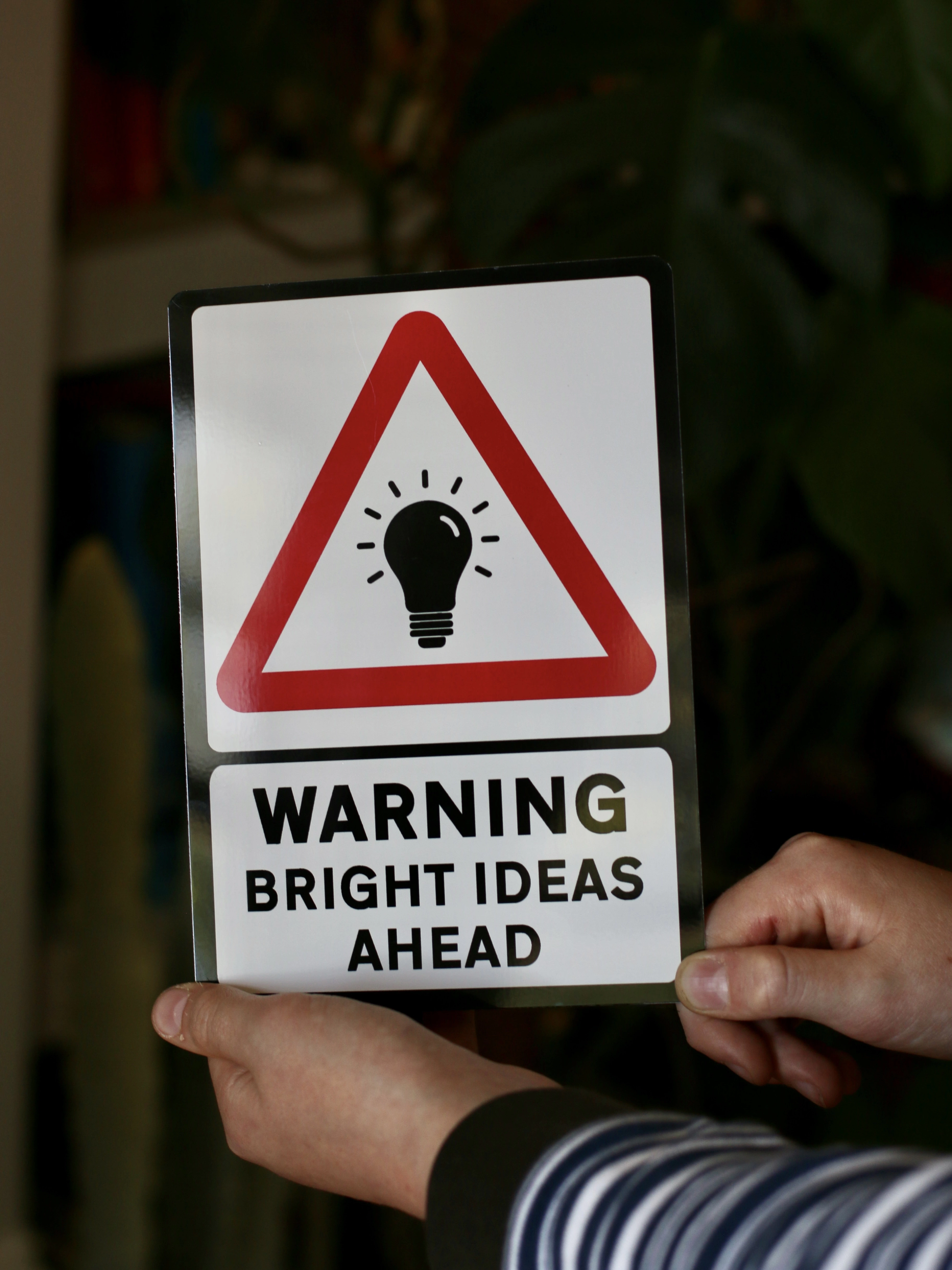
Bright Ideas Ahead Sign
MIMS & FAMILY
Trends won’t stick with everyone but they will help paint a picture for many businesses and brands. You can then do what feels right for your business and your values.
So how do you forecast trends?
Jo told us, “Without a crystal ball, it’s a mix of science and art. Some of it is research-based (we can find the information; which books are being published this year or what films will come out and so on). We know the elections are coming up that will make a difference in what people will feel and value, for instance... But the bit that makes it a trend and not market research is foresight. This is where designers come in. You need a good imagination to develop a hypothesis based on what might happen. So if those components come together, what might that mean to a middle aged woman or a new parent for example? We look at a number of scenarios and base it on these.” Jo also explores ‘calculables’ (things like the Olympics which change people’s behaviour), and ‘chaotics’ (unexpected events which also have an impact and can dramatically change predictions, such as the pandemic).
What’s the difference between mega trends, macro trends and micro trends?
When it comes to trend forecasting, Jo explains that there are mega trends (lasting 15 years or more, like environmentalism, for example), macro trends (usually around for two years, such as ‘ocean plastics’, which are often influenced by mega trends) and then micro trends (things like ‘Colour of the Year’ and so on). Why can’t you just ask people about all of these things? Jo said, “It’s like the old Henry Ford quote about the car industry (although it’s thought it might not be him that said it), but the quote is, ‘If I would have asked people what they wanted, they would have said faster horses.’ Asking customers only gets you so far. You need to combine different types of methodologies and insight to give you more informed answers and help you make predictions that will benefit your business.”
‘If I would have asked people what they wanted, they would have said faster horses.’ Asking customers only gets you so far. You need to combine different types of methodologies and insight to give you more informed answers.
So what are the big trends for 2024 and beyond?
Jo believes the three main overarching trends that won’t be going anywhere for a while are…
- Sustainability
- The ageing population
- Equality and diversity
You need to break these down though to the stories coming out of each one. For example, to not just think about sustainability overall but one element of it. It’s important then to think about what this means for people and how it turns up in real life. If the macro trend is about being connected to nature, as we live in an increasingly urban environment, it might then be about creating natural pine needle scented candles for when people crave to be closer to the natural world, for example.
Jo said, “I would also focus on the digital age. If you look back, there are themes within this like, two years ago we talked about the metaverse and now it’s AI. We are obsessed with digitisation... The other big trend to flag is post-consumption — the idea that as a society we’re consuming too much. How can you make sure you’re making long-lasting products, not putting more landfill out into the world?” An example might be to not make handwash where 90% of it is water, but instead selling a capsule that you can add water to yourself which will use much less packaging. It’s a trend that’s moving quickly. It’s not just vegans embracing this. We’re all influenced by it.”
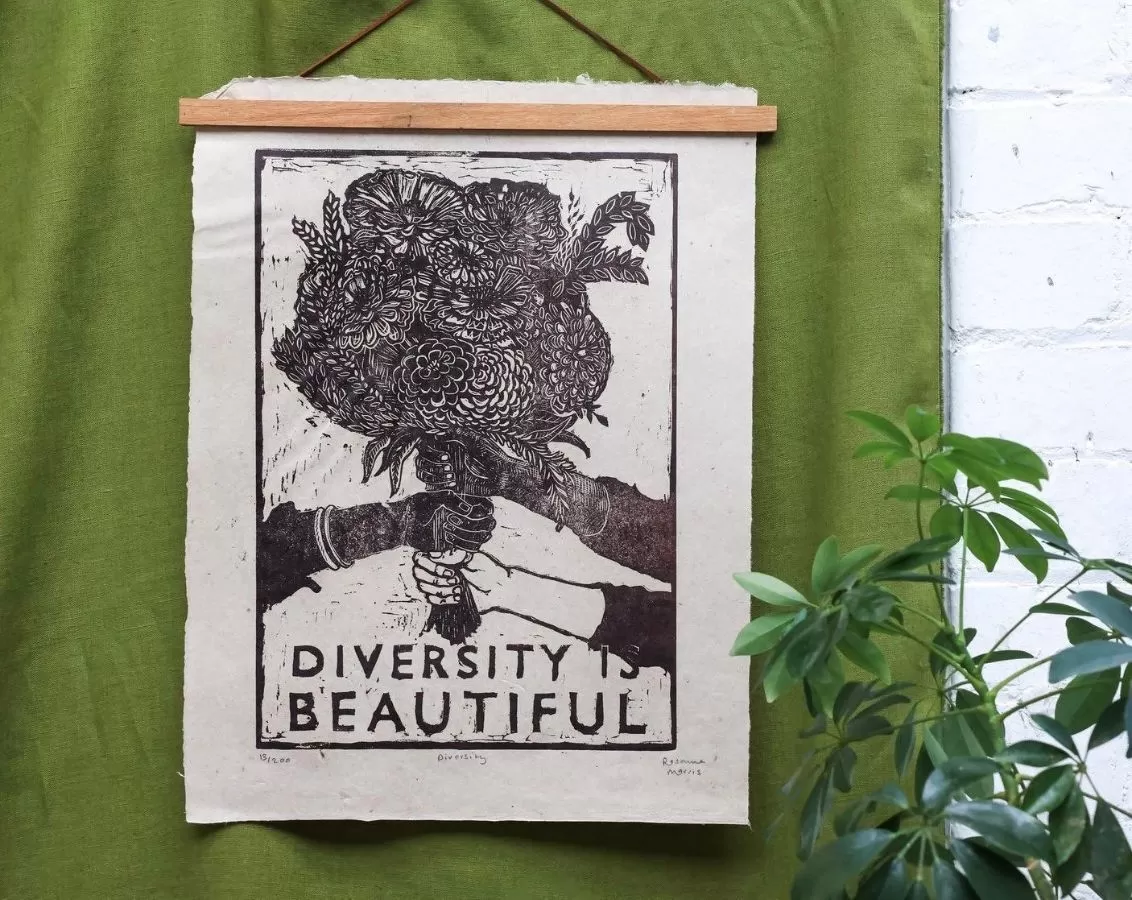
Diversity - Linocut Print
ROSANNA PRINTS
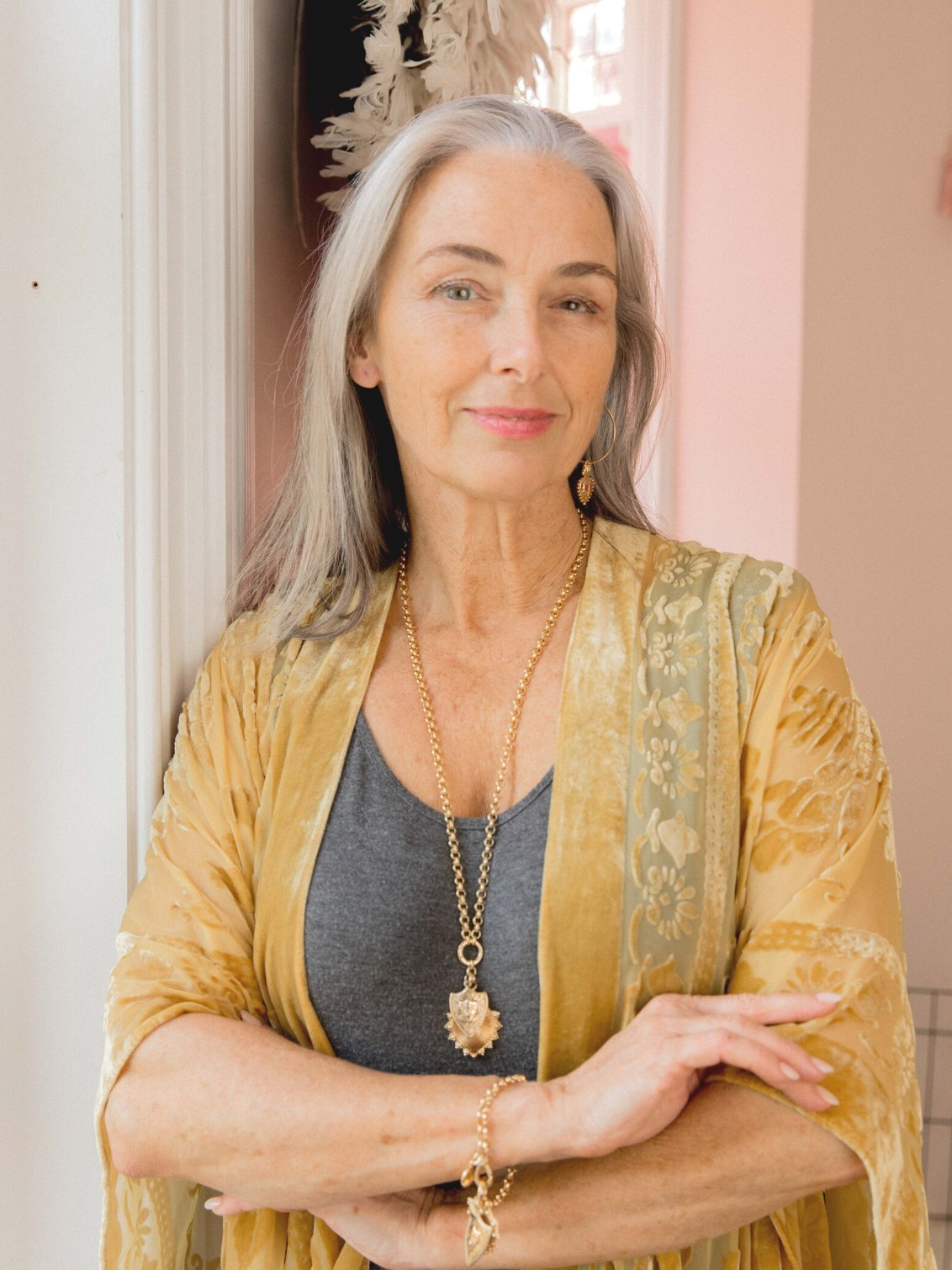
Virginia Woolf Gold Belcher Chain Necklace
PATROULA JEWELLERY
2024’s macro trend predictions? Not ‘open space’ but ‘broken space’
This macro trend isn’t easy to say but it’s what Jo calls ‘democratising domesticity’, which is focused around the shift in traditional living arrangements, moving away from people being married and having 2.4 children. Jo explains that, “A third of the UK said they now live in a multi-generational household. Our homes need to work very hard for us. If we work from home we need them to also become an office as well as somewhere for socialisation for the family etc. They need to be flexible.”
Small businesses already use the kitchen table where they live to work on, but Jo explains that, “So many homes now have open plan kitchen / diner / living spaces and so on. If you look at things like the beautiful boom in handwash…Twenty years ago, no one cared about fancy handwash or that our washing up liquid had ugly packaging… But as soon as the walls came down, the kitchen area became a furnished, decorated space with plants and so on. Now people don’t want the same space, that open plan doesn’t work for them anymore. They want ‘broken plan’ where you can section off teens playing games in one space, someone trying to cook a meal and someone else being on the phone etc. How can you help customers create zones for the home to help split it up to work for them? We can maximise the opportunity once we know what people need.”
More macro trends: from bucket list lifestyles, to Queenagers and more
We’re starting to see Gen Z moving into the workforce and rejecting in-office, 9-5 culture, too. They want it to fit in with their lives and have ‘bucket list lifestyles’. Jo says, “It’s about the appreciation of things outside of work — the goals and ambitions we have to travel and so on. We’re seeing millennials and Gen Z in particular bringing those things forward. They won't wait till retirement and it’s not just younger people actually. We’re seeing people — especially over 50s women, brilliantly called Queenagers by Eleanor Mills — who are living their lives with the freedom of teenagers. The whole way we live is changing.
These are just some of the trends being forecast that can help small businesses, but follow Jo’s company on Instagram @TrendBible to find out more. Trend forecasting can help you become a brand of the future by pinpointing and tapping into opportunities and it’s well worth exploring these predictions.
Trend forecasting for brands: key takeaways…
It’s worth remembering that:
1. The main benefits of trend forecasting could really help your business:
Sparking product, brand and marketing ideas, and helping you better communicate with customers.
2. Trend forecasting uses a clever blend of data, information and insight:
You can use the mega, macro and micro trends to drill down in a way that’s appropriate and authentic to your business.
3. Understand the big trends of 2024 and beyond to set you in good stead:
From post-consumption or bucket list lifestyles, to Queenagers and broken spaces, knowing how customers’ lives, needs and feelings are shifting will set you up for the future.
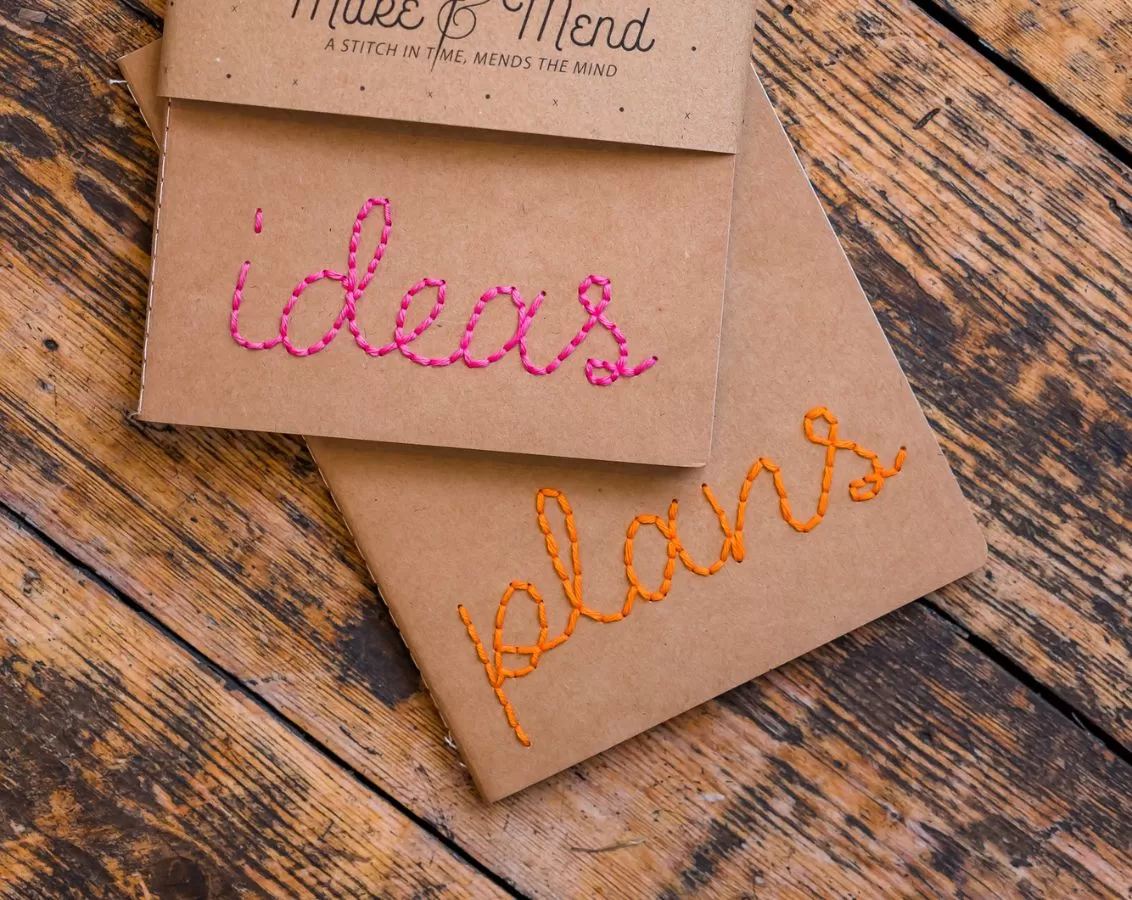
Plans & Ideas Embroidered Notebooks
MAKE & MEND
Related Content
More inspiration for you

The value of brand; why it’s your most important asset
Brand & Purpose

Why B Corp businesses and brands that do good are the future
Brand & Purpose

The secret to building a brand
Brand & Purpose

What makes good brand advertising?
Brand & Purpose

You are your brand — stand out!
Brand & Purpose

What is ‘Thoughtful Marketing’?
Brand & Purpose

How to create a brilliant brand (& why it matters)
Brand & Purpose

The art of creating a magical brand experience
Brand & Purpose
Be the first to know
Sign up to our emails for brand new small business magic and inspiration. And if you create an account, you’ll also get exclusive product drops, discounts and more from Club Holly & Co, too.

